Reading books together is an incredibly easy and, not to mention, enjoyable way to be present and engaged with kids.
Add a CommentViewing: Blog Posts Tagged with: Reading Tips, Most Recent at Top [Help]
Results 1 - 6 of 6
Blog: The Children's Book Review (Login to Add to MyJacketFlap)
JacketFlap tags: Ages 0-3, Ages 4-8, Ages 9-12, Book Lists, featured, Grandparents, Lane Smith, Roaring Brook Press, Knopf Books for Young Readers, Reading Tips, Little Brown Books for Young Readers, Barney Saltzberg, Quest for Literacy, Family Books, Lee Wildish, Dial books, Todd Parr, Holly Schindler, Jean Reagan, Best Kids Stories, NorthSouth Books, Danny Chatzikonstantinou, Todd Tarpley, Add a tag
Blog: The Open Book (Login to Add to MyJacketFlap)
JacketFlap tags: reading, parents, reading tips, Educator Resources, parent engagement, 20 minutes a day, daily reading, Add a tag
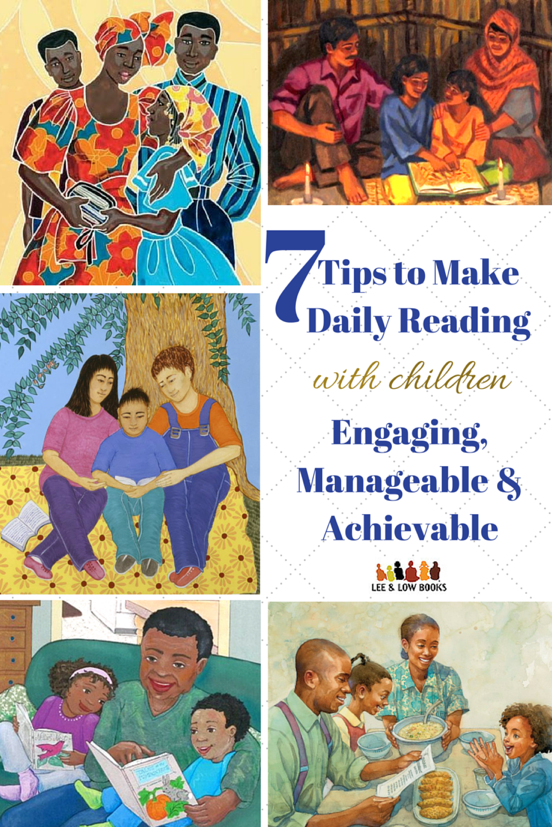 Every time we visit the dentist, the hygienist asks how often we floss. We all know the correct and only answer is “everyday.” We squirm under the light as we try to come up with an answer that gets us as close to saying “everyday.” We leave feeling guilty and promise this is the year to change only to find ourselves in the same spot six months later.
Every time we visit the dentist, the hygienist asks how often we floss. We all know the correct and only answer is “everyday.” We squirm under the light as we try to come up with an answer that gets us as close to saying “everyday.” We leave feeling guilty and promise this is the year to change only to find ourselves in the same spot six months later.
This uncomfortable, familiar exchange reminds me of a lot of the conversations with parents about home reading habits at parent-teacher conferences. After each assessment cycle throughout the year, I would ask parents how reading was going on at home (outside of daily homework).
They knew this conversation was coming. I knew it was coming. They knew the right answer is “everyday” and like a hygienist peering into a patient’s mouth, I had an educated guess on how often the child was actually reading at home based on progress in class.
Just 20 minutes a day! I would list the benefits and show the charts (here and here and here and here and here). I would point out that one cartoon episode is 30 minutes (24 minutes without commercials!). Parents know how important it is—no one disagrees—and we would all nod earnestly and vigorously with promises to start this very night.
Yet, it is hard. Schedules are tight and unforgiveable. Children (and parents!) are tired at the end of the day.
- Both parents and children agree strong reading skills are among the most important skills children should have.
- Reading is one of the most popular resolutions for both parents and children.
- Half of all New Year’s resolutions fail within six months.
- Some parents need to expose their children to a new vegetable 10 or more times before they’ll consider trying it (point being: children aren’t always easy to work with).
- Even adults take 66 days on average to start a new habit (and more to break an old one).
Mind-blowing insight alert: Creating new habits takes time and persistence.
How do we make daily reading with children engaging, manageable, and achievable?
1. Start with bite-size steps. You don’t have to raise your child’s literacy level, knowledge base, or vocabulary by next week. Remember the end game: To create curious, book-loving readers. Starting a reading routine at home is about creating a lifelong habit for your family and children. Aim to improve your family’s daily reading routine for just the next eight weeks (by the following parent-teacher conference in March or May), instead of this year’s resolution to be reading every day for the rest of your child’s K-12 education (a bit daunting, no?).
2. Redefine what a reading routine looks like. Adjust what reading time is for your family based on your child’s age, reading level, energy level, and interest:
- You read the story to your child
- You alternate reading together by page, chapter, or day
- Your child reads to you and a younger sibling
- You download the audio book version and follow along in the book together
- You both read with your own copy silently side by side for the 20 minutes and discuss afterward
As Tim Gunn says, “Make it work.”
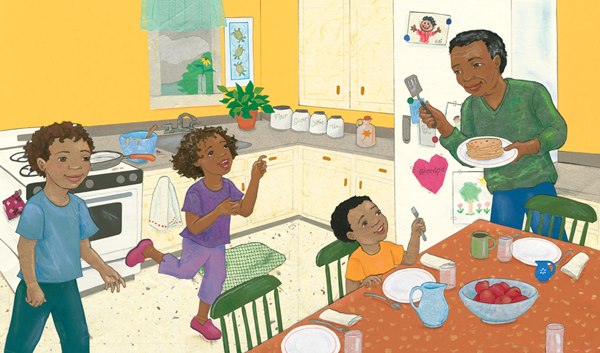 3. Make reading “spill over.” Choose a book with an additional tie-in to other parts of the day and your family’s interests:
3. Make reading “spill over.” Choose a book with an additional tie-in to other parts of the day and your family’s interests:
- If there is a new movie or community theater’s play coming out based on a book, read the book first and then reward yourselves with the movie or play.
- Pick a fairy tale to read and find additional versions in both book and movie form to compare. Hello, Cinderella!
- Follow up with a readers’ theater script to pair with the story. I can’t get enough of the readers’ theater scripts from California Young Reader Medal.
- If the book includes a craft, science experiment, or recipe at the end, read the story and then extend the learning into the garage or kitchen. This is great for whole family participation.
- Pair a current event or news article with a book on the same topic, culture, or time period.
4. Only pick books and formats your child loves or is interested in. Reading at home should not be boring, a chore, a punishment, or part of homework. Don’t pick books assigned in class, books that peers all seem to be reading, or books you think your child should be reading. This is about enjoyment, building interest, and creating memories. With this in mind, books come in all types/reading comes in all forms:
- Toy instruction manuals or activity/craft books
- Cookbooks—recipes are great for re-reading!
- Poetry collections
- E-readers (Note: Just be sure to pick a program that presents the story to the child as a book, not just as a cartoon where the music and animation effects can distract from the words and vocabulary.)
- Graphic novels and comic books—read about how Lee & Low publisher, Jason Low, became an avid reader after getting hooked on his first comics!
Better yet—let your child choose for maximum engagement.
5. Don’t cry over skipped reading. For whatever reason, reading time just didn’t happen one night. Whoops! Just read the next day and perhaps add a few minutes on extra. Any time is better than none at all. Remember you are trying to show that we read for enjoyment, not punishment. Every day you read with your child is a win—one skipped day doesn’t undo all the progress you have made together.
6. Do over think it—please! If you are finding it difficult to stick with reading 20 minutes a day with your child, think about where the obstacle is. Are nights too busy? Do transit or errands take time away from family downtime? Do you get home too late? Reading at breakfast or on the bus/subway, engaging grandparents and older siblings, trying 10 minutes in the morning and 10 minutes at night may help your family stick with the reading routine.
7. Join a community. You are not the first or last parent to a) struggle to inspire your child to read b) find time to read or c) make reading time exciting. There are wonderful experts with research, reading tips, and inspiration available. Some of my favorite parent reading newsletters are National Center for Families Learning, ¡Colorín Colorado!, Reading Rockets, and Zoobean.
The Number One Most Important Thing:
Every time you read with your child is a win. Every time you skip is a lost opportunity, but it won’t doom your child. Remember the end goal: To support our children’s lifelong love of reading (increased knowledge/vocabulary will be a bonus). Keep at it.
Here’s to a great year of reading and growing!
 Jill Eisenberg, our Senior Literacy Expert, began her career teaching English as a Foreign Language to second through sixth graders in Yilan, Taiwan as a Fulbright Fellow. She went on to become a literacy teacher for third grade in San Jose, CA as a Teach for America corps member. She is certified in Project Glad instruction to promote English language acquisition and academic achievement. In her column she offers teaching and literacy tips for educators.
Jill Eisenberg, our Senior Literacy Expert, began her career teaching English as a Foreign Language to second through sixth graders in Yilan, Taiwan as a Fulbright Fellow. She went on to become a literacy teacher for third grade in San Jose, CA as a Teach for America corps member. She is certified in Project Glad instruction to promote English language acquisition and academic achievement. In her column she offers teaching and literacy tips for educators.
Blog: The Children's Book Review (Login to Add to MyJacketFlap)
JacketFlap tags: Ages 9-12, Humor, Chapter Books, Reading Tips, Quest for Literacy, Anna Staniszewski, Dirt Diary series, Add a tag
Because I’m an author as well as a writing instructor and a reader, I’m often asked for book recommendations. Sometimes I’m asked to suggest books that are like my books, while other times I might need to think of titles that are good for a certain age range or in a specific genre.
Add a CommentBlog: First Book (Login to Add to MyJacketFlap)
JacketFlap tags: Literacy, Books & Reading, Education, Summer Reading, reading rockets, summer slide, Reading Tips, Guest Blog Posts, First Book Partners, Family Engagement, Tina Chovanec, Add a tag
Guest blogger Tina Chovanec is the director of Reading Rockets: the authoritative online source for comprehensive and accessible information about teaching young children to read and helping those who struggle.Reading Rockets is one of five education websites created by Learning Media, a division of WETA, the PBS affiliate in the Washington DC area.
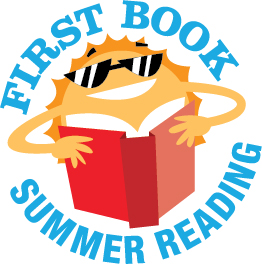 With the call of the swimming pool and the playground, getting kids of all ages to stay interested in learning and reading during the long, hot summer can be a challenge to parents and summer program leaders. Keeping kids’ minds active during the summer means they’ll be ready for the challenges of the new school year. So, how to rev up the summer learning? Picking one learning activity a week can be a fun way to switch up the normal summer routine.
With the call of the swimming pool and the playground, getting kids of all ages to stay interested in learning and reading during the long, hot summer can be a challenge to parents and summer program leaders. Keeping kids’ minds active during the summer means they’ll be ready for the challenges of the new school year. So, how to rev up the summer learning? Picking one learning activity a week can be a fun way to switch up the normal summer routine.
Try some of these tips and great resources to get kids excited about learning – all are designed to help kids look at some of their favorite subjects in a new way and keep their brains lighting up with new knowledge all summer long.
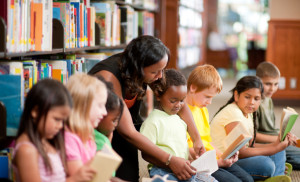 Investigate your public library’s summer reading program. Most libraries offer a special program or two during the summer, including lively read-alouds, visits from children’s authors and storytellers, “maker fairs” and science-themed activities. Most are free – plus your child can take home a stack of books to extend the learning!
Investigate your public library’s summer reading program. Most libraries offer a special program or two during the summer, including lively read-alouds, visits from children’s authors and storytellers, “maker fairs” and science-themed activities. Most are free – plus your child can take home a stack of books to extend the learning!
Listen up! Audiobooks are a great way to engage sometimes-reluctant readers and introduce kids to books above their reading level – helping to build vocabulary and background knowledge. Many libraries have audiobooks available for check out, and an Internet search can turn up several sites, including Speakaboos.com, that offer free audiobooks for children. Learn more about the benefits of audiobooks for all readers.
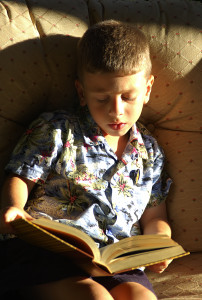 Where do all the summer thunderstorms come from? How do fireflies light up? Summer can lead to all kinds of interesting questions to investigate together. Pick a question and find an answer! Visit the library to find fiction and non-fiction books relating to kids’ questions. Do some Internet research – you can find resources at the American Library Association’s Great Website for Kids.
Where do all the summer thunderstorms come from? How do fireflies light up? Summer can lead to all kinds of interesting questions to investigate together. Pick a question and find an answer! Visit the library to find fiction and non-fiction books relating to kids’ questions. Do some Internet research – you can find resources at the American Library Association’s Great Website for Kids.
Go on a learning adventure! Is your child interested in bugs? Dinosaurs? The Night Sky? Music? Do you have a young detective, explorer or superhero at home? Reading Rockets’ Start with a Book offers 24 kid-friendly themes, with theme-related books, hands-on activities, and awesome apps and website to jumpstart your summer learning adventures.
Write it down. Encourage your child to keep a simple journal or summer diary. Track interesting things like the number of fireflies seen in one minute, the number of mosquito bites on a leg or the different types of food that can go on the grill. Each entry is a chance to be creative. Your child can record everyday adventures in your local community with Reading Rockets’ Adventure Tracker and log summer reading favorites with Reading Rockets’ Book Tracker!
Sign up to receive more summer learning tips, reading facts and inspiring stories this summer!
The post Five Tips for Summer-Long Learning appeared first on First Book Blog.
Blog: Jen Robinson (Login to Add to MyJacketFlap)
JacketFlap tags: growing bookworms, Read-Aloud Handbook, the read-aloud handbook, Literacy, nonfiction, parenting, reading aloud, Parents, Newsletter, penguin, children's literacy, reading tips, jim trelease, Add a tag
I've included some general responses to my recent reading of the 7th edition of Jim Trelease's The Read-Aloud Handbook in a separate post. Here, I'm sharing the bits that motivated me to want to take a specific action, and/or change something that I'm doing, in terms of my daughter's reading experience.
Mind you, I'm already reading to my daughter (now 3 1/2) regularly. She visits the library, and chooses her own books. We have books in the car, and we take books with us when we go on trips. We read mostly picture books, but are dabbling in early readers, and even dipping our toes into chapter books. I've read at least two earlier editions of The Read-Aloud Handbook, as well as various other titles on this subject, and I'm confident that we're doing a reasonable job already.
Still, I found some useful take home messages, places where I think we can do a little bit better. Like these:
Perform Repeat Reads of the Same Book
"Research shows that even when children reach primary grades, repeated picture book reading of the same book (at least three times) increases vocabulary acquisition by 15 to 40 percent, and the learning is relatively permanent." (Page 10, Chapter 1)
The immediate take-home message for me on this is to make sure that we do read new picture books at least three times (unless we dislike them, of course). This isn't much of a problem with books that we own, but sometimes the big stack of library books goes back with books that were only read once or twice. I guess mostly this is a reminder of being patient about re-reads.
Fill More Book Baskets
Another thing that Trelease advocates is the placement of book baskets in strategic locations throughout the house. I did this when my daughter was younger, but I haven't updated the baskets and locations recently. I need to stock a basket for the bathroom, and figure out a way to keep books closer to the kitchen table. This is going to tie in with another project that we're just starting - putting aside some of the board books (sob!), which currently fill the baskets.
Get A Bedside Lamp
A related idea, Trelease also suggests buying your child a bed lamp, and letting them stay up 15 minutes later if they are reading in bed. We're not quite ready for this idea in my house yet (we tend to read to her until she falls asleep), but a bed lamp is clearly something that we're going to need soon.
Read More Poetry
Trelease also talks about the need to read aloud stories that rhyme (Chapter Two). I haven't been as good about reading my daughter poetry as I would like. She's now starting to play with rhyming herself (and has just discovered tongue-twisters), and I think it's time for us to add more poetry to our repertoire.
Always Say the Title and Name of the Author
In Chapter 4: The Dos and Don'ts of Read-Aloud, Trelease says:
"Before you begin to read, always say the name of the book, the author, and the illustrator--no matter how many times you have read the book." (Page 74)
I used to be very good about this, and had been letting it go a bit lately. This reminder has already gotten me back on track with attribution. I also like to say where the book came from, if it was a gift.
Read More Slowly
Another reminder from Chapter 4, always good to hear again:
"The most common mistake in reading aloud--whether the reader is a seven-year-old or a forty-year-old--is reading too fast. Read slowly enough for the child to build mental pictures of what he just heard you read. Slow down enough for the children to see the pictures in the book without feeling hurried. Reading quickly allows no time for the reader to use vocal expression." (Page 75)
I think it's always tempting for adults to read quickly, and get through more books. There's a feeling of accomplishment if we read five books tonight before bed. But reading them better, more slowly, with more expression and discussion, is clearly better in the long run. I'm going to work on this.
Chart Reading Progress
My daughter loves to look at her growth chart, and see how much she's grown. Trelease advocates creating a home or school wall chart so that kids can see how much they've read. He says that:
"images of caterpillars, snakes, worms, and trains work well for this purpose, with each section representing a book. Similarly, post a world or U.S. wall map, on which small stickers can be attached to locations where your books have been set." (Page 76)
I especially like the map idea, because we LOVE maps in my house. I'll have to think about the best way to do this. US map? World map? Both?
Initiate Home Drop Everything and Read (D.E.A.R.) Time
Trelease suggests setting aside time each day for the child to read by herself (even if she is just flipping through books that she can't yet read). He adds: "All your read-aloud motivation goes for naught if time is not available to put that motivation into practice." (Page 77)
We've done this informally, especially in the car. But I like the idea of having a designated quiet self-reading time. I'm happy to also use the time to model reading, by reading my own book. I'll have to think about how this could be integrated into our schedule.
Spend Less Time Pecking Away on My Phone
I don't have one quote for this, but a number of references in The Read-Aloud Handbook have affirmed something that I've been concerned about for a while. I spend too much time looking at things on my phone, in my daughter's presence. I'd rather either be present with her, or have her see me reading books (or newspapers or magazines). If I am going to read electronically, I prefer to do it on the Kindle Paperwhite, which is only for reading books. I always call this my "Kindle Book", to reinforce the idea that when she sees me with it, I am reading.
Continue Limiting TV Time, and Turn On the Closed Captioning
Trelease has a whole chapter on the impact of television and audio on kids and reading. I've been determined since before she was born that my daughter will not have a television set in her bedroom (and I won't have one in mine, either). We currently only allow her to watch television on weekends (though she does sneak in a bit of extra time on the iPad during the week sometimes). But she's like an addict, constantly asking if it's the weekend, and then binging on movies when it is.
I'm particularly struck by the results of a study that found looked at children's schooling level by age twenty-six vs. the amount of television watched in childhood. "Children who viewed less than one hour a day were the most likely to achieve a college degree." (Page 147) Another study suggested "no detrimental effects on learning (and some positive effects) from TV viewing up to ten hours per week; however, after that, the scores begin to decline. The average student today watches three times the recommended dosage." (Page 148)
I'm not going to make any changes right now, besides turning on the closed captioning (something that Trelease has recommended for years, so that kids SEE the words). But I'm going to keep an eye on how many hours of TV watching creep in over the weekends. Just as soon as the baseball playoffs are over, anyway.
Limit iPad Time When Traveling
We don't have a portable DVD player, or a DVD player in the car, and I don't see much need for one. But we have downloaded a few select movies onto the iPad. We've found this useful for long car trips, or other times when we need a break. (Most recently, when we brought our daughter along on a wine tasting trip to Napa.) I'm not prepared to give this up - it's been awfully handy on long flights. But I do take this point by Trelease into account:
"The recent addition of the DVD player to family transportation does nothing but deprive the child of yet another classroom: conversation with parents or the shared intellectual experience of listening to an audiobook communally." (Page 154)
I don't think that my daughter is quite ready to follow along with an audiobook, but I do plan to use them for car trips when I think that she's ready. In the meantime, I'm going to work on talking more, and resorting to the iPad less, especially in the car (though I won't give it up entirely).
Conclusion
A pretty fine list of actions to take, considering that this is at least the third edition I've read of The Read-Aloud Handbook (out of 7 published editions). Trelease has said that this will be the last edition that he writes, which makes me sad. But I'm very happy to have this one.
How about you all? Have you read The Read-Aloud Handbook? Has it affected your efforts to grow bookworms in your own household? I'd love it if you would share.
© 2013 by Jennifer Robinson of Jen Robinson's Book Page. All rights reserved. You can also follow me @JensBookPage or at my Growing Bookworms page on Facebook. This site is an Amazon affiliate.
Blog: Cachibachis (Login to Add to MyJacketFlap)
JacketFlap tags: Reading Rockets, reading tips, Blogs about reading, Add a tag
Check out Reading Rockets, they are blogging about Blogs about Reading. (How's that for a confusing sentence). There are links for teachers, parents, reading resources, tips and much more.





